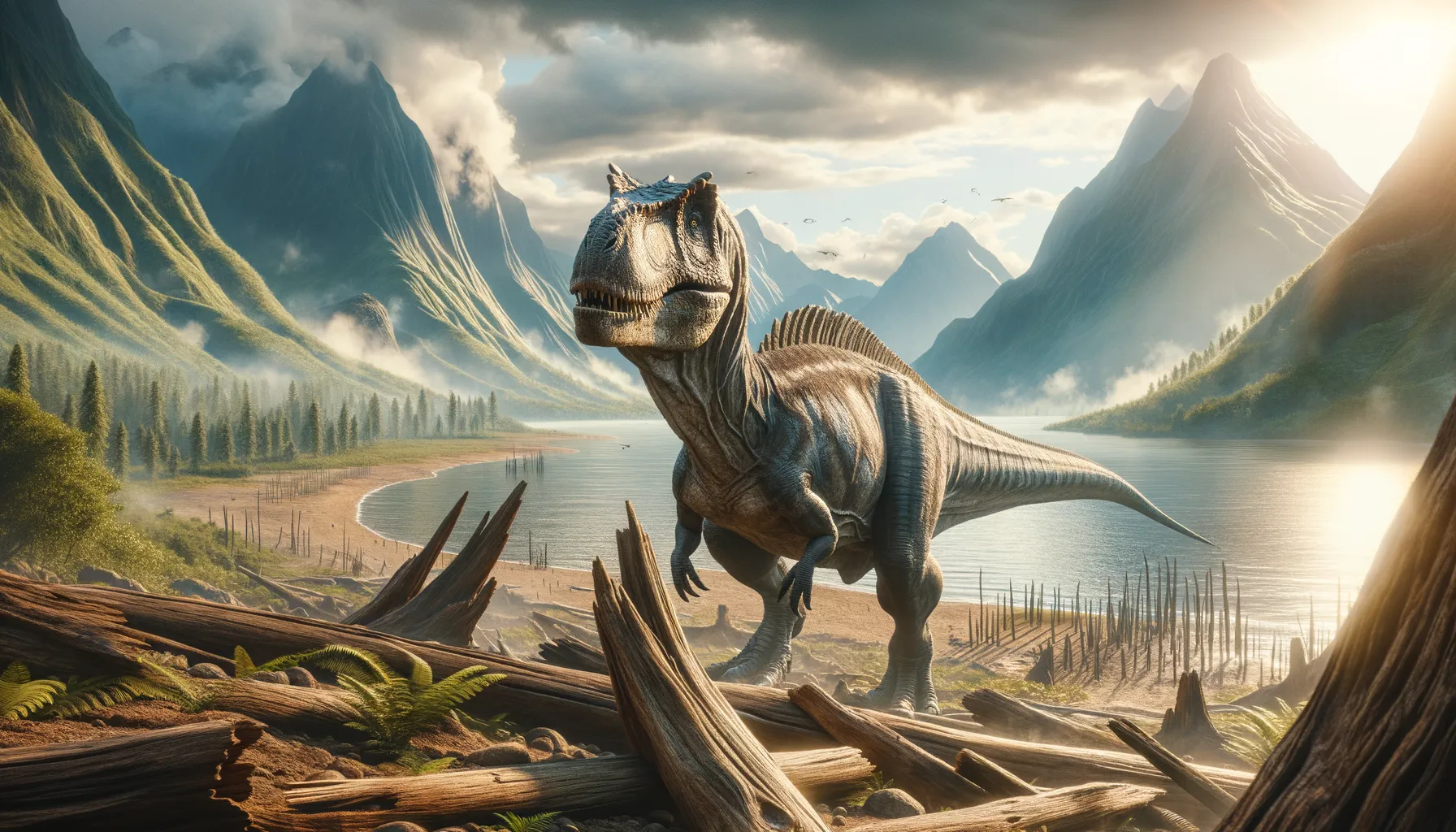
Trigonosaurus
Discover the mighty herbivore of the past!
Period
Cretaceous
Length
Up to 7 meters long.
Height
Approximately 3 meters tall.
Weight
Around 2,500 kilograms.
Trigonosaurus was a large herbivorous dinosaur that roamed the earth during the Cretaceous period. It had a robust body and lived in what is present-day South America. This dinosaur adapted well to the rich and diverse ecosystems it inhabited, being an essential part of the prehistoric landscapes it lived in. Its fossils have provided significant insights into herbivorous dinosaur species and their role in ancient ecosystems.
Diet
Trigonosaurus primarily fed on a variety of vegetation available in its environment. This would have included ferns, cycads, and possibly flowering plants that emerged during its time.
Hunting
As an herbivore, Trigonosaurus did not engage in hunting. Instead, it spent its days foraging for plants and utilizing its size to deter predators.
Environmental challenges
Trigonosaurus faced environmental challenges such as changing climate conditions and competition for resources with other herbivores. Additionally, it had to avoid predation from large carnivorous dinosaurs of its time. The fluctuation in food availability might have influenced its migratory patterns and social behavior.
Speed
Relatively slow-moving.
Lifespan
Estimated to live for several decades.
First discovery
Discovered at a site in southern Brazil.
Fun Facts
- Trigonosaurus is a lesser-known dinosaur discovered in Brazil, known from the Late Cretaceous period.
- Its name means 'triangular lizard' due to the distinctive shape of some of its bones.
- Trigonosaurus was a member of the Titanosaur family, which includes some of the largest land animals to ever exist.
- Despite its massive size, Trigonosaurus likely moved slowly and had a herbivorous diet, feeding on leaves and plants.
- The discovery of Trigonosaurus has provided valuable insights into the diversity of South American sauropods.
- Fossils of Trigonosaurus suggest it had a long neck, which helped it reach high vegetation in its environment.
- Being part of the Titanosaur group, Trigonosaurus probably had a whip-like tail that could be used for defense.
Growth and Development
Trigonosaurus exhibited rapid growth in its early years to reach a size that could defend against predators. As it matured, its growth rate slowed but continued until adulthood. The species had distinct juvenile and adult stages, with noticeable changes in size and body proportions.
Habitat
This dinosaur lived in lush, forested areas of what is now South America. It thrived in environments that provided abundant plant life, ensuring a steady supply of food. Rivers and lakes in its habitat likely played a crucial role in its daily life, providing both hydration and additional feeding grounds.
Interaction with other species
Trigonosaurus shared its habitat with other herbivorous dinosaurs, often competing for similar food sources. It would have interacted with predators, using its size and social structures to deter attacks. Coexistence with smaller dinosaurs and mammals was likely, as they would occupy different ecological niches.
Natural lifespan
Its natural lifespan was comparable to many large modern-day herbivores.
Reproduction
Trigonosaurus was an egg-laying dinosaur, like most of its kind. It likely exhibited some degree of parental care, perhaps guarding nests from predators and assisting hatchlings until they could fend for themselves.
Social behaviour
Trigonosaurus may have lived in herds or small social groups for protection against predators. These social structures could have facilitated communication and cooperation in navigating their environment. Display behaviors might have existed, using physical features to assert dominance or attract mates.
Fossil locations
Fossil remains of Trigonosaurus have been predominantly found in southern Brazil. Sites in this region have contributed significantly to understanding the distribution and adaptation of this dinosaur. Excavations have unearthed both adult and juvenile specimens, offering a glimpse into different life stages of this species.
